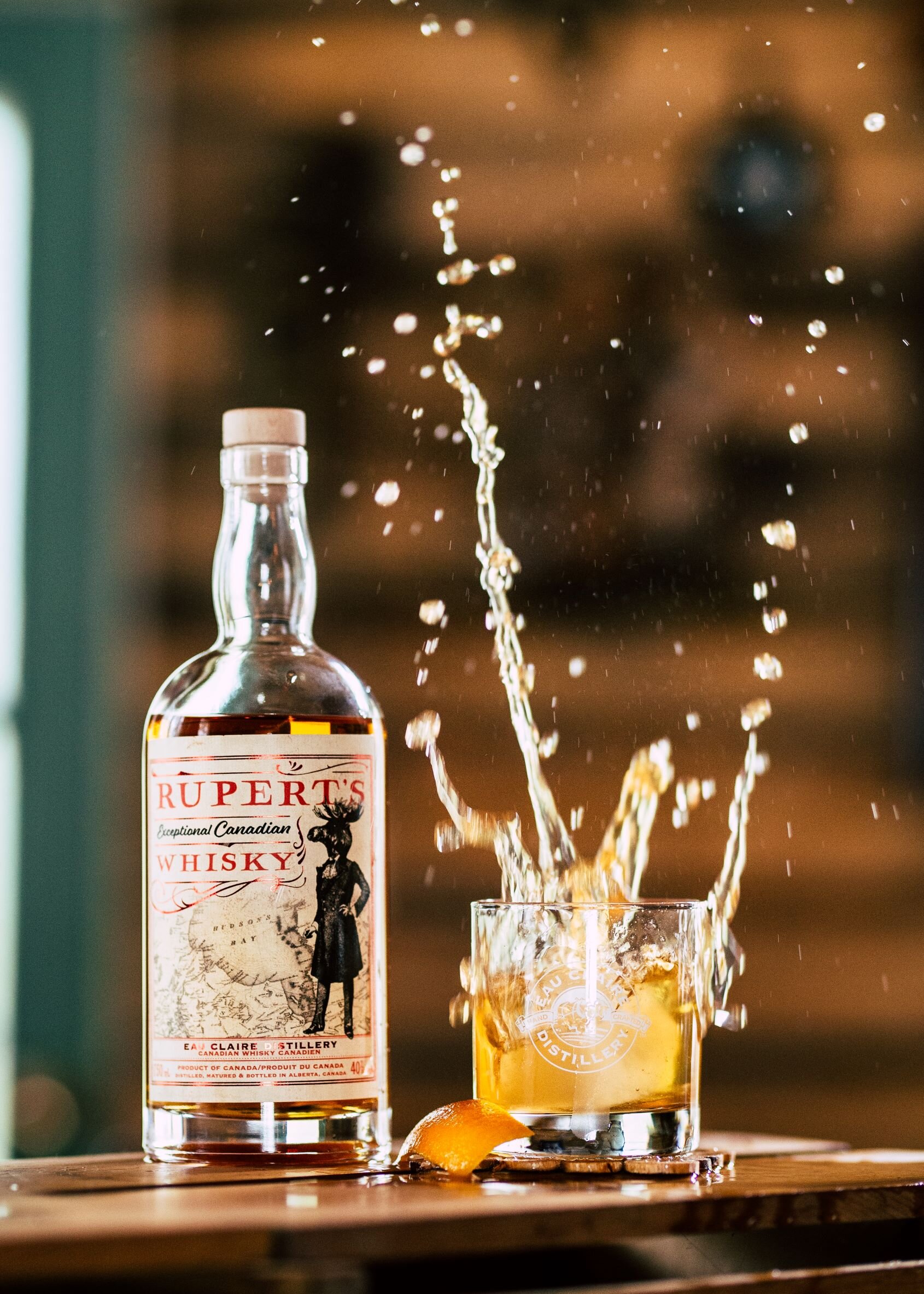Rupert's Exceptional Canadian Whisky
From 1670 to 1870, a region called Rupert’s Land covered 1/3 of Canada’s landmass. The area included southern Alberta, most of Saskatchewan, all of Manitoba, Southern Nunavut and parts of Northern Ontario and Quebec. For a while, the territory also dipped into the northern United States. Rupert’s Land was zoned as an exclusive commercial space for the Hudson’s Bay Company until March 20, 1869, when the Government of Canada bought the region for 1.5 million dollars. The largest Canadian real estate transaction by size, it was a bargain even if the Canada Government neglected to collect its HBC points.
Photo Credit @ParkWhiskeySociety
Alberta’s Eau Claire Distillery has named its newest whisky “Rupert’s Exceptional Canadian Whisky” in recognition of this geographical sense of place. “The whisky is a little symbolic,” says distillery President, David Farran. “We have the ability to take a whisky made with barley grown in Alberta and take it well beyond its borders. It honours the fact that there is some phenomenal history and geography that Canadians should be proud of.”
For the past four years, batches of Eau Claire single malt whisky would run out before distiller Caitlin Quinn could have another batch ready. Rupert’s satisfies the demand for an Eau Claire whisky that’s available year-round by blending a base whisky with the distillery’s prized single malt.
Although currently available online and in select Alberta stores, Farran has big plans for this release. “We want this whisky to be available across North America and make a geographic link between us as Canadians and all other markets.”
Eau Claire links each of its spirits to a social animal. For example, the label of Eau Claire’s Prickly Pear Equinox includes an illustration of a Victorian-era ox and horse taking a break from their agrarian duties. Rupert’s bottle extends this tradition with its dapper moose.
“We love our moose and have had that moose as our main social animal since we started some six odd years ago,” says Farran. “We wanted to bring him into the fore. All of our products are somehow linked to Victorian Canadian animals and we are very proud of that Canadian aspect of it. When you come into the distillery, you’ll see a large portrait of the moose. To be able to take that moose, give him a name and give him a character – that was our intent.”
Back in the day, the British put little value on Rupert’s land. And luckily for Victorian-era moose, HBC was assessed rent of two elk heads and two beaver pelts. That rent came due whenever the Royal Family paid Canada a visit. This included King George VI and Queen Elizabeth’s coast to coast trip in 1939, where two cases of Canadian whisky famously chaperoned the Royals across the country. One day, after an alleged few cocktails, the train stopped in Winnipeg so that the Royals could collect their rent. With their whisky, elk heads and beaver pelts secured, they then went on their merry way like two aristocrats in search of an Illuminati party. There is no doubt that Rupert’s Whisky would find its way onto that Royal train if that adventure happened today.
This impressive blended whisky, rich in malty cereal notes, takes the palate on a journey from one end of the flavour spectrum to the other. The nose is saturated with fruity pipe tobacco, maple sugars, scorched firewood, dried fruits, grapefruit juice and wine gums. Fruit and spice on the creamy palate are easy going as salted chocolate, roasted nuts and fruitcake balance peppery spice and tannic walnut skins that strengthen Rupert’s character.
Rupert’s Whisky is non-chill filtered and has no artificial caramel colour added. We didn’t ask if HBC brokered the whisky’s price, but at $35, it’s a bargain and highly recommended.
You can read more about Eau Claire in our book, The Definitive Guide to Canadian Distilleries.

